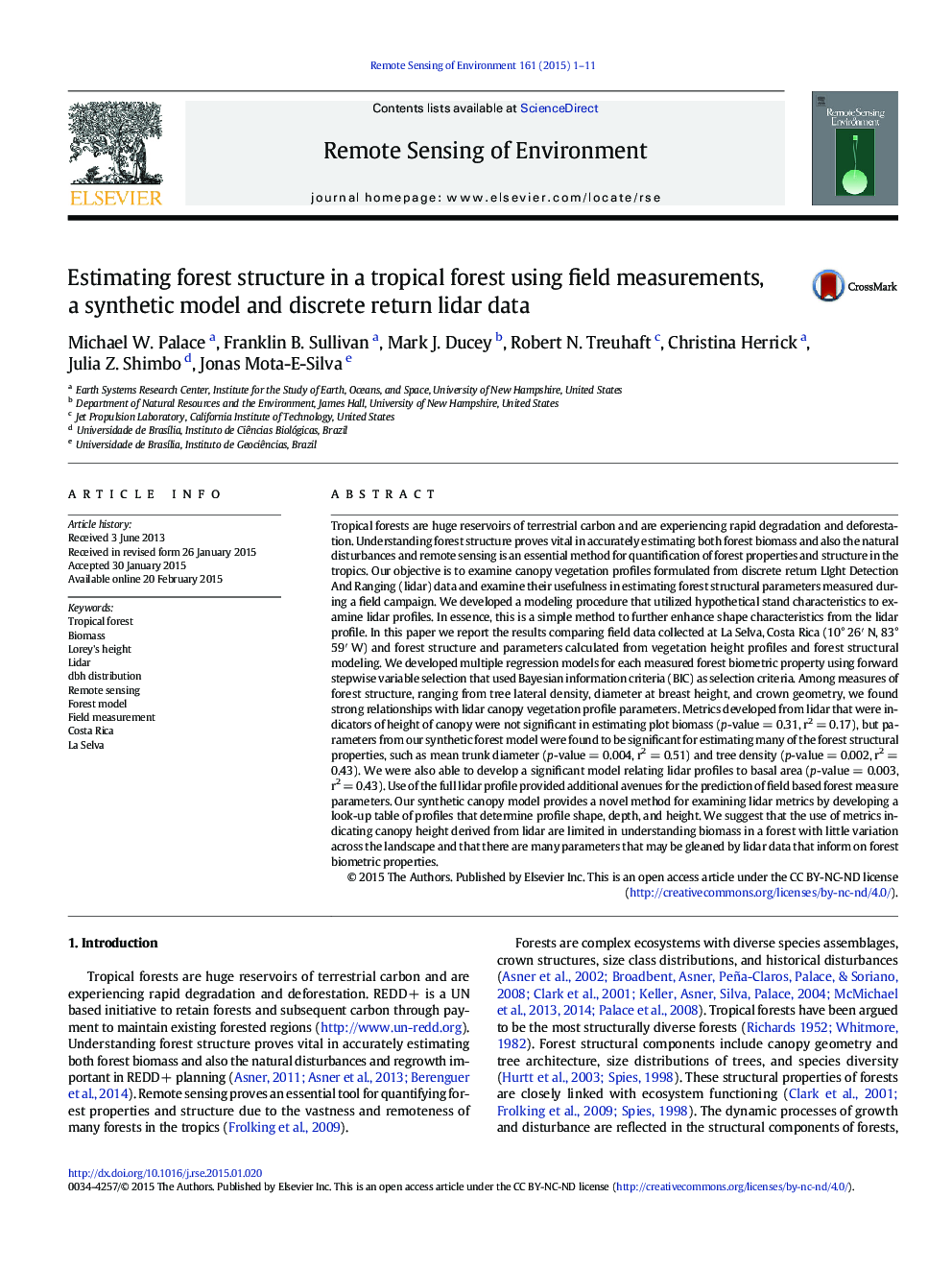| کد مقاله | کد نشریه | سال انتشار | مقاله انگلیسی | نسخه تمام متن |
|---|---|---|---|---|
| 6346148 | 1621239 | 2015 | 11 صفحه PDF | دانلود رایگان |
عنوان انگلیسی مقاله ISI
Estimating forest structure in a tropical forest using field measurements, a synthetic model and discrete return lidar data
ترجمه فارسی عنوان
ارزیابی ساختار جنگل در جنگل های گرمسیری با استفاده از اندازه گیری های میدان، یک مدل مصنوعی و داده های داده شده با استفاده از داده های گسسته
دانلود مقاله + سفارش ترجمه
دانلود مقاله ISI انگلیسی
رایگان برای ایرانیان
کلمات کلیدی
موضوعات مرتبط
مهندسی و علوم پایه
علوم زمین و سیارات
کامپیوتر در علوم زمین
چکیده انگلیسی
Tropical forests are huge reservoirs of terrestrial carbon and are experiencing rapid degradation and deforestation. Understanding forest structure proves vital in accurately estimating both forest biomass and also the natural disturbances and remote sensing is an essential method for quantification of forest properties and structure in the tropics. Our objective is to examine canopy vegetation profiles formulated from discrete return LIght Detection And Ranging (lidar) data and examine their usefulness in estimating forest structural parameters measured during a field campaign. We developed a modeling procedure that utilized hypothetical stand characteristics to examine lidar profiles. In essence, this is a simple method to further enhance shape characteristics from the lidar profile. In this paper we report the results comparing field data collected at La Selva, Costa Rica (10° 26ⲠN, 83° 59ⲠW) and forest structure and parameters calculated from vegetation height profiles and forest structural modeling. We developed multiple regression models for each measured forest biometric property using forward stepwise variable selection that used Bayesian information criteria (BIC) as selection criteria. Among measures of forest structure, ranging from tree lateral density, diameter at breast height, and crown geometry, we found strong relationships with lidar canopy vegetation profile parameters. Metrics developed from lidar that were indicators of height of canopy were not significant in estimating plot biomass (p-value = 0.31, r2 = 0.17), but parameters from our synthetic forest model were found to be significant for estimating many of the forest structural properties, such as mean trunk diameter (p-value = 0.004, r2 = 0.51) and tree density (p-value = 0.002, r2 = 0.43). We were also able to develop a significant model relating lidar profiles to basal area (p-value = 0.003, r2 = 0.43). Use of the full lidar profile provided additional avenues for the prediction of field based forest measure parameters. Our synthetic canopy model provides a novel method for examining lidar metrics by developing a look-up table of profiles that determine profile shape, depth, and height. We suggest that the use of metrics indicating canopy height derived from lidar are limited in understanding biomass in a forest with little variation across the landscape and that there are many parameters that may be gleaned by lidar data that inform on forest biometric properties.
ناشر
Database: Elsevier - ScienceDirect (ساینس دایرکت)
Journal: Remote Sensing of Environment - Volume 161, May 2015, Pages 1-11
Journal: Remote Sensing of Environment - Volume 161, May 2015, Pages 1-11
نویسندگان
Michael W. Palace, Franklin B. Sullivan, Mark J. Ducey, Robert N. Treuhaft, Christina Herrick, Julia Z. Shimbo, Jonas Mota-E-Silva,
